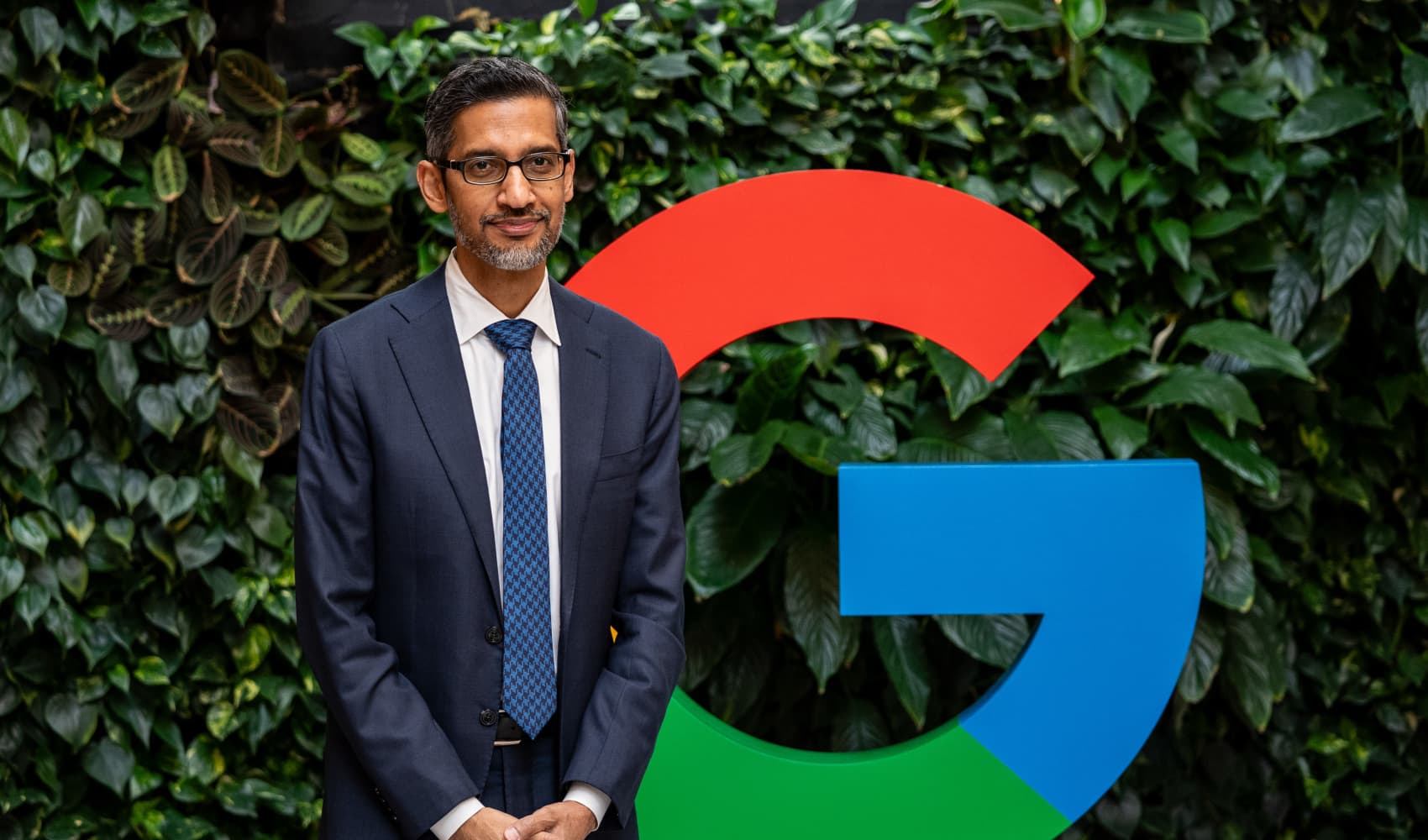Alphabet's Ad Business: Headwinds Ahead - What You Need to Know
Alphabet Faces Ad Headwinds: What's Happening & What It Means for You
Introduction: Navigating the Shifting Sands of the Ad Market
Okay, folks, let's talk about Alphabet, the behemoth behind Google and a whole host of other innovative ventures. It's no secret that their advertising business is a massive cash cow. But, like any business navigating the global economy, they're facing some potential bumps in the road. Executives recently indicated they expect a "slight headwind" to their ads business this year. What does that mean for Alphabet, for the broader tech landscape, and even for *you*? Let's dive in and unpack it.
Understanding the "Slight Headwind"
What exactly is this "slight headwind" they're talking about? Essentially, it's a softening in the ad market, particularly stemming from Asia, due to broader macroeconomic conditions. It's like trying to sail a boat when the wind isn't quite blowing in your favor. You might still reach your destination, but it'll take a bit more effort and strategy.
The Asian Connection
Why is Asia a particular concern? Well, Asia is a massive market with significant growth potential, but it's also sensitive to economic fluctuations and trade policies. Changes in these areas can directly impact advertising spending, as businesses become more cautious about their budgets. Think of it like this: if a major retailer in Asia anticipates lower consumer spending, they're less likely to invest heavily in advertising, right?
Trump's Trade Policies: The Elephant in the Room
Ah, yes, the elephant in the room: former President Trump's trade policies. An Alphabet executive pointedly stated that these policies would have a negative impact on their core advertising business. How so?
Tariffs and Uncertainty
Tariffs create uncertainty. Uncertainty makes businesses nervous. Nervous businesses cut costs. One of the first places they look to cut costs? You guessed it: advertising. Imagine you're a small business owner importing goods. A new tariff increases your costs. Suddenly, that extra advertising spend looks a lot less appealing, doesn't it?
Macro Conditions: The Big Picture
The discussion during Alphabet's first-quarter earnings call was peppered with questions about "macro" conditions. What are we talking about here?
Interest Rates and Inflation
Macro conditions are the overall state of the economy. This includes things like interest rates, inflation, unemployment, and consumer confidence. Rising interest rates can make borrowing more expensive, slowing down economic growth. Inflation can erode consumer purchasing power, leading to decreased spending. These factors all contribute to a less favorable environment for businesses, impacting their advertising budgets.
Alphabet's Spending Plans: $75 Billion and Counting
Despite these headwinds, Alphabet remains committed to spending $75 billion in capital. That's a *lot* of money. Where is all that going?
Investing in the Future
This $75 billion represents a huge bet on the future. It's going towards things like:
- Data centers: The backbone of Google's services.
- Artificial intelligence: The next frontier of innovation.
- New products and services: Expanding Alphabet's reach and influence.
- Acquisitions: Buying up promising startups and technologies.
Flexibility is Key
While the overall commitment remains, Alphabet executives emphasized that the *timing* of these investments might be impacted. This highlights the importance of adaptability in the face of economic uncertainty. It's like planning a road trip: you have a destination in mind, but you might need to adjust your route based on traffic and weather conditions.
The Online Ad Market: On Edge?
The report indicates the online ad market is "on edge." Is this an overreaction, or is there genuine cause for concern?
Confidence is Contagious
Market sentiment is a powerful force. When investors and businesses become concerned about the economy, their confidence can waver. This can lead to a domino effect, with reduced spending and investment further dampening economic activity. It's like a self-fulfilling prophecy.
Alphabet's Strengths: Why They'll Likely Weather the Storm
While these headwinds are concerning, it's important to remember that Alphabet is a resilient company with significant advantages. Think of them as a massive oak tree, able to withstand strong winds.
Market Dominance
Google's search engine dominance and YouTube's video platform dominance give Alphabet an unparalleled reach to consumers. This makes them an indispensable advertising partner for many businesses, even in challenging economic times. It's hard to ignore the power of reaching billions of users.
Innovation and Diversification
Alphabet isn't just about search and video. They're constantly investing in new technologies and exploring new markets. This diversification helps to buffer them against downturns in any one particular area. From self-driving cars (Waymo) to life sciences (Verily), Alphabet has its fingers in many pies.
What This Means for Advertisers: Strategy is Paramount
If you're an advertiser, what should you do in the face of these potential headwinds?
Focus on Efficiency
Now is the time to double down on efficiency. Make sure your ad campaigns are highly targeted and optimized for maximum ROI. A/B test everything, track your results meticulously, and be prepared to adjust your strategy quickly.
Diversify Your Channels
Don't put all your eggs in one basket. Explore different advertising channels and platforms to reduce your reliance on any one source. Consider strategies like:
- Social media marketing
- Email marketing
- Content marketing
- Search engine optimization (SEO)
What This Means for Consumers: Minimal Direct Impact (Probably)
Will these headwinds directly impact consumers? Probably not in a significant way, at least not immediately.
Indirect Effects
The most likely impact would be indirect. If businesses cut back on advertising, they might also cut back on hiring or investment, which could eventually affect the broader economy. However, given Alphabet's strength and the overall resilience of the economy, these effects are likely to be relatively small.
The Future of Advertising: Adapting to Change
The advertising landscape is constantly evolving. What does the future hold?
AI-Powered Advertising
Artificial intelligence is already playing a major role in advertising, and its influence will only continue to grow. AI can be used to personalize ads, optimize campaigns, and predict consumer behavior. Expect to see even more sophisticated AI-powered advertising solutions in the years to come.
Privacy Concerns and Regulations
Privacy concerns are also shaping the future of advertising. Consumers are becoming more aware of how their data is being used, and governments are enacting stricter regulations. This will require advertisers to be more transparent and responsible in their data practices.
The Importance of Long-Term Vision
Despite the potential for short-term headwinds, Alphabet's long-term vision remains strong. They are investing heavily in the future, and they are well-positioned to navigate the challenges ahead. It's all about playing the long game.
Conclusion: Weathering the Storm Together
So, Alphabet expects a "slight headwind" in its advertising business. This is primarily due to macroeconomic conditions, including trade policies and economic uncertainty, particularly impacting Asia. While the online ad market is on edge, Alphabet's strengths, including market dominance and a commitment to innovation, position them to weather the storm. Advertisers should focus on efficiency and diversification, while consumers are unlikely to see any immediate, significant impact. The future of advertising will be shaped by AI and privacy concerns. It's a dynamic landscape, and adaptation is key.
Frequently Asked Questions
Here are some frequently asked questions about Alphabet's advertising business and the challenges it faces:
What exactly does "headwind" mean in this context?
A "headwind" in business terms refers to factors that make it more difficult to achieve desired results. In this case, it means that Alphabet expects slower growth or even a slight decline in its advertising revenue due to unfavorable economic conditions.
How will Trump's trade policies specifically affect Alphabet?
Trade policies, such as tariffs, can increase costs for businesses and create economic uncertainty. This leads businesses to reduce their advertising budgets, which directly impacts Alphabet's revenue, as companies will pay less for ad placements.
Is this a sign that Google is in trouble?
No, not at all. While these headwinds present a challenge, Alphabet is a very strong company with a diverse portfolio of businesses. They have the resources and expertise to navigate these challenges.
What can businesses do to mitigate the effects of a potential advertising slowdown?
Businesses should focus on optimizing their ad campaigns for efficiency, diversifying their advertising channels, and building strong relationships with their customers.
Will this affect the price of Google products or services?
It's unlikely that consumers will see a direct impact on the prices of Google's products or services. However, a prolonged period of slower growth could potentially lead to some adjustments in the long term.


